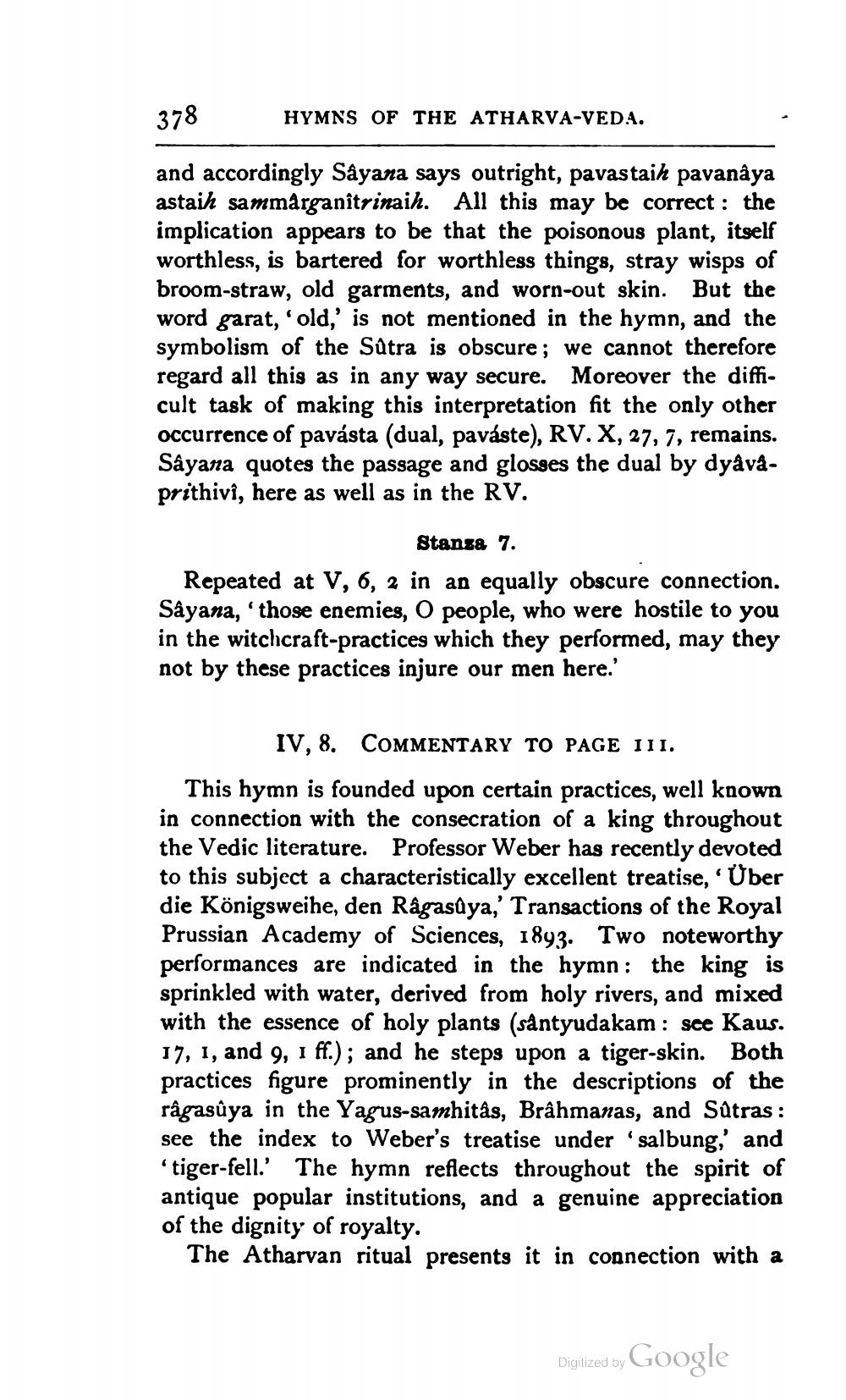________________
378
and accordingly Sâyana says outright, pavas taik pavanâya astaih sammarganîtrinaih. All this may be correct: the implication appears to be that the poisonous plant, itself worthless, is bartered for worthless things, stray wisps of broom-straw, old garments, and worn-out skin. But the word garat, 'old,' is not mentioned in the hymn, and the symbolism of the Sûtra is obscure; we cannot therefore regard all this as in any way secure. Moreover the difficult task of making this interpretation fit the only other occurrence of pavásta (dual, paváste), RV. X, 27, 7, remains. Sâyana quotes the passage and glosses the dual by dyâvâprithivi, here as well as in the RV.
HYMNS OF THE ATHARVA-VEDA.
Stanza 7.
Repeated at V, 6, 2 in an equally obscure connection. Sâyana, 'those enemies, O people, who were hostile to you in the witchcraft-practices which they performed, may they not by these practices injure our men here.'
IV, 8. COMMENTARY TO PAGE III.
This hymn is founded upon certain practices, well known in connection with the consecration of a king throughout the Vedic literature. Professor Weber has recently devoted to this subject a characteristically excellent treatise, ' Über die Königsweihe, den Râgasûya,' Transactions of the Royal Prussian Academy of Sciences, 1893. Two noteworthy performances are indicated in the hymn: the king is sprinkled with water, derived from holy rivers, and mixed with the essence of holy plants (sântyudakam: see Kaus. 17, 1, and 9, 1 ff.); and he steps upon a tiger-skin. Both practices figure prominently in the descriptions of the râgasûya in the Yagus-samhitâs, Brâhmanas, and Sûtras: see the index to Weber's treatise under 'salbung,' and 'tiger-fell.' The hymn reflects throughout the spirit of antique popular institutions, and a genuine appreciation of the dignity of royalty.
The Atharvan ritual presents it in connection with a
Digitized by Google




